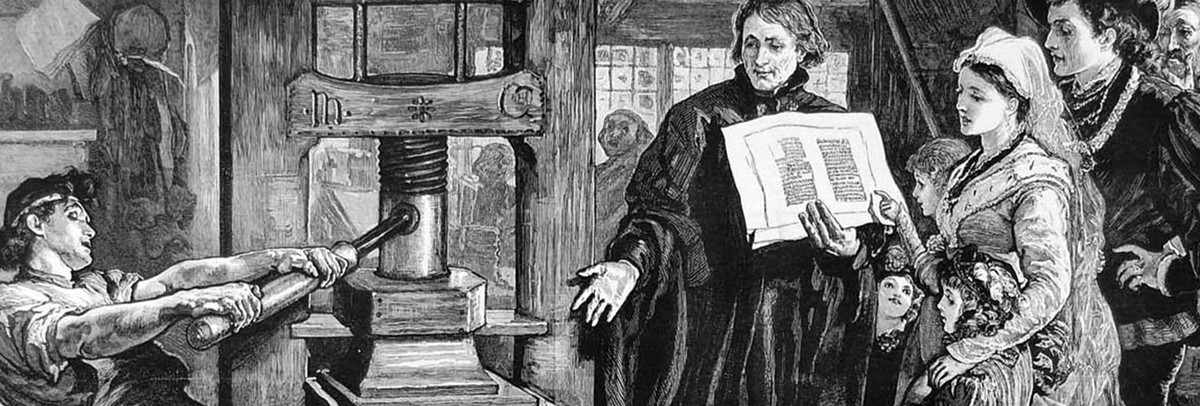The Power of the Printing Press
The Printing Press, a simple machine that applies pressure to an inked surface on a print medium, revolutionized how we share, spread, and create our communication. This invention made the mass production of texts possible and therefore, the speed in which we gain information exponentially increased. Before the printing press, hand copying works or block printing (originated by the Chinese monks) was the method used to produce literature, pamphlets, or other texts. These methods, although innovative for their time and classic, took more resources and further human intervention to be able to do. The Printing Press minimized these factors of time and human error.
The presentations in class stated that the Gutenberg Bible was the first work produced from the Printing Press. Johannes Gutenberg was the man who made the Printing Press in Germany during the 15th century. Because of him, the rapid sharing of knowledge all throughout Europe kickstarted the way we produce and consume information today. There are even still some original Gutenberg Bibles left in circulation. Not only did Gutenberg heighten the speed of modern day communication with his invention, but also helped to reduce mass illiterate rates as more people had access to different works of text now. Before, only the elite classes or people who could afford to buy texts had access to printed information. Now, with the introduction of the Printing Press, mass production in which aided supply and demand, made these resources possible to a variety of demographics outside the upper-elite. Illiterate groups of people now had entry into this realm of a socioeconomic based intellectual hierarchy.
Such a simple invention managed to completely revolutionize the world in multiple ways. Since the creation of the Printing Press, we have used its technological impact as a foundation for our modern communications. Without such an innovative advancement, the way we share and spread our ideas could have been vastly different than how we are familiar with it today. So, instead of celebrating medial accomplishments, such as Christopher Columbus's unoriginal discovery of the Americas, we should be revering heroes such as Gutenberg for their extremely impactful contributions to modern society… just a thought and suggestion.
https://www.livescience.com/43639-who-invented-the-printing-press.html



